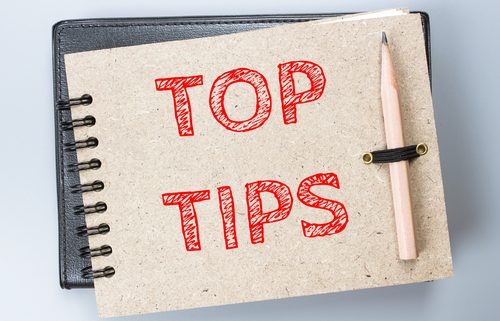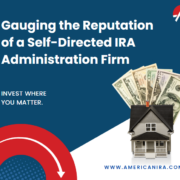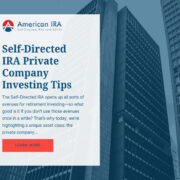Five Tips Everyone Should Know Before Starting a Self-Directed IRA
When Mitt Romney disclosed that he held potentially hundreds of millions of dollars in retirement accounts thanks to self-directing and choosing wise private investments, it sent shockwaves through many retirement investors. How was it possible to hold that much money within a retirement account when the contribution limits are so low? The answer, of course, is the Self-Directed IRA.
Self-directing your IRA opens up all sorts of possibilities. In Romney’s case, he was able to invest in private companies that became exponentially more valuable over time. And with the umbrella of the IRA over these investments, the tax savings alone could add up to millions of dollars.
Not everyone will have access to those types of investments. But it helps to know what you are getting into before you start a Self-Directed IRA. With the right approach, there’s no telling the types of similar exponential investments you might make. Here’s what you will need to know first:
Tip #1: Choose an Overall Strategy
You do not need to specifically know that you are going to invest in this property or that property before you pick up your Self-Directed IRA. You can do research later. That comes down to financial tactics—and those can be picked up along the way. But you should have an idea of what you want your overall strategy to be. What are you planning on using this Self-Directed IRA for, and how will you use it?
Tip #2: Know Your Contribution Limits
A Self-Directed IRA is just one type of account you might hold, usually referring to a traditional IRA. But keep in mind you might also hold a Self-Directed Roth IRA, or Self-Directed 401(k). There are a lot of options here, and before you pick any specific one, it helps to know the contribution limits on each. For example, in the 2019 tax year, you can invest up to $6,000 in a traditional or Roth IRA, or up to $7,000 if you’re 50 or older. Knowing these limits helps you determine just how much money you put in each account.
Tip #3: Know Your Options
The beauty of the Self-Directed IRA is that it does not limit you to a specific set of mutual funds, as some retirement plans might. Self-Directing opens up a litany of potential investment choices, including:
- Real estate
- Promissory notes
- Precious metals
- LLC investments
- Private stock
…and that’s just getting started. Even less-traditional investments like owning private mineral rights can be held within a Self-Directed IRA. You can always learn of these options after you invest in a IRA, but it helps to know your options before you make any major decisions.
Tip #4: Pick Your Funding Method
Before you start a Self-Directed IRA, you have to know how you are going to put money into it. Sure, you can always just start making fresh contributions to a new Self-Directed IRA, but it helps your starting process if you can fund it with an existing IRA and hit the ground running.
There are a few options here. You can choose a rollover, in which a retirement account’s funds (say, from a 401(k)), are directly converted into funds within your IRA. An indirect rollover is similar, wherein you receive funds from an IRA and have 60 days allowed by the IRS to transfer these funds to a new IRA.
Tip #5: Choose a Reputable Self-Directed IRA Administration Firm
There’s going to be a lot of paperwork—you might as well outsource it to a firm with a strong reputation and a long history of handling Self-Directed IRA for clients.
Interested in learning more about Self-Directed IRA? Contact American IRA, LLC at 866-7500-IRA (472) for a free consultation. Download our free guides or visit us online at www.AmericanIRA.com.







